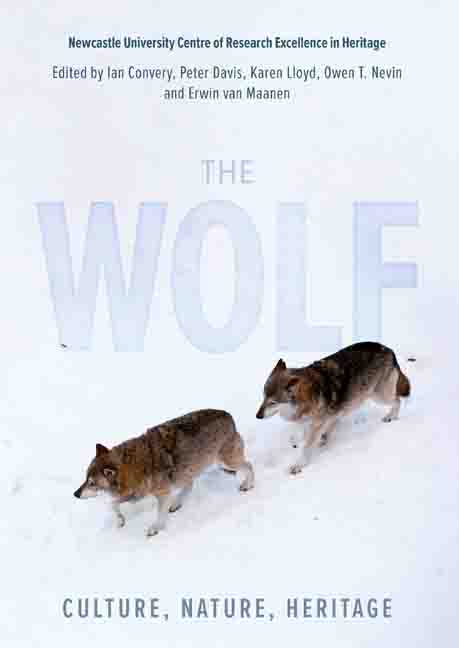Book contents
- Frontmatter
- Dedication
- Contents
- List of Illustrations
- Preface and Acknowledgments
- List of Abbreviations
- Poem: Trophic Cascade by Camille T Dungy
- Foreword
- Part I Imagining the Wolf
- Part II What Makes the Wolf
- Part III Return of the Wolf
- Part IV Personal Encounters
- Afterword: The Ecological Disadvantage of Living on an Island
- Glossary
- List of Contributors
- Index
3 - Wolves and Other Mammals Hunted in Medieval English Forests
Published online by Cambridge University Press: 10 January 2024
- Frontmatter
- Dedication
- Contents
- List of Illustrations
- Preface and Acknowledgments
- List of Abbreviations
- Poem: Trophic Cascade by Camille T Dungy
- Foreword
- Part I Imagining the Wolf
- Part II What Makes the Wolf
- Part III Return of the Wolf
- Part IV Personal Encounters
- Afterword: The Ecological Disadvantage of Living on an Island
- Glossary
- List of Contributors
- Index
Summary
There are few archaeological records of wolves from medieval England, and the widespread trope of the wolf as a voracious predator found in medieval literary and art historical traditions is considered dubious evidence for its survival into the period (Pluskowski 2006, 2008). However, as scholars have long recognised, wolves are occasionally referred to in the English chancery records (Pluskowski 2010; Yalden 1999, 168; Harting 1880, 134–49). These records include reliable evidence, the licences granted to favoured individuals to hunt wolves and more commonly other wild mammals, in certain royal forests or counties. They have been preserved in the chancery rolls (the Patent Rolls, Close Rolls, Charter Rolls, and Fine Rolls). It is possible to identify over 200 specific English hunting licences from these sources, dating from the 13th and 14th centuries. The purpose of this chapter is to map and contextualise those hunting licences and explore what they suggest about the extinction of the wolf, as well as the status of wolves, foxes, hares, wildcats, badgers and squirrels in the royal forests of medieval England.
From the 11th century, parts of England were designated as hunting land. These were formalised as ‘forests’ from the Norman Conquest of 1066 (Short 2000). Today, the term ‘forest’ is generally used to refer to woodland often, but not always, consisting of non-native, coniferous trees. But medieval forests were not exclusively woodland, as they included open habitats such as heathland, moorland and bog. In the 13th century, up to a third of England may have been designated as forest land (Griffin 2007, 25). Most of this was royal forest, under the control of the royal court, and included some settlements that pre-dated the designation of the area as forest. The extent of forests was significant. For example, the whole of Essex was designated as forest for some time, which made life very difficult for the people of the town of Colchester in the northeast of the county (Short 2000). Forests were governed by forest laws, which dictated what people living within them could and could not do. Perhaps the most important aspect of royal forests in the 11th to the 14th centuries was that it was forbidden for anyone except the royal court to hunt the red, roe and newly imported fallow deer there, at risk (after the 1217 Forest Charter) of a year's imprisonment and a fine (Almond 2003, ch. 5).
- Type
- Chapter
- Information
- The WolfCulture, Nature, Heritage, pp. 37 - 46Publisher: Boydell & BrewerPrint publication year: 2023



